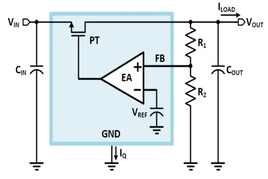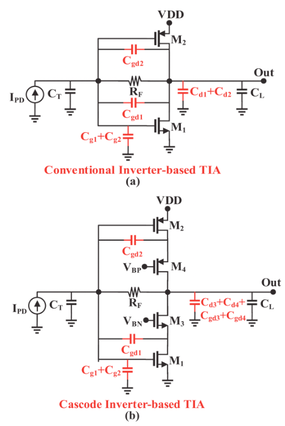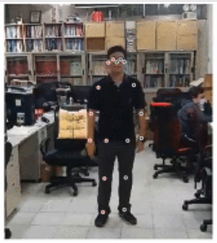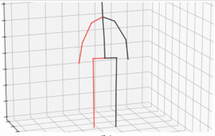Our Editors-in-Chief’s Top Picks
The Editors-in-Chief of our CASS publications have selected some noteworthy papers from the recent issues of our journals:
IEEE Open Journal of Circuits and Systems

- T. Bryant, Y. Chen, D. S. Koblah, D. Forte, and N. Maghari, "A Brief Tutorial on Mixed Signal Approaches to Combat Electronic Counterfeiting,” IEEE Open Journal of Circuits and Systems, vol. 4, 2023.
This tutorial introduces a variety of mixed-signal approaches to combat electronic counterfeiting. An LDO-based odometer capable of accurately classifying ICs as new or aged is presented as a promising method for detecting counterfeit and recycled ICs.
https://ieeexplore.ieee.org/document/10064465

- M. H. Kashani, H. Shakiba, and A. Sheikholeslami, "An Inductorless Optical Receiver Front-End Employing a High Gain-BW Product Differential Transimpedance Amplifier in 16-nm FinFET Process,” IEEE Open Journal of Circuits and Systems, vol. 4, 2023.
In this paper, a fully-differential transimpedance amplifier (TIA) providing a high gain-BW product (GBP) is introduced. In the proposed architecture, a cascode cross-coupled structure is employed to double the effective transconductance of the cascode devices, improving the BW of the TIA. Moreover, a differential architecture is implemented using an RC high-pass filter along with a buffer stage requiring smaller capacitance and resistance.
https://ieeexplore.ieee.org/author/37086416721

- Z-F Zhan and H-P. Huang, "Imitation System of Humanoid Robots and Its Applications,” IEEE Open Journal of Circuits and Systems, vol. 4, 2023.
In this paper, we propose an imitation system that imitates human motions in videos to plan robot actions that are similar to human motions, with the aim of the complicated whole-body action planning of humanoid robots. Additionally, we created an interaction system that will enable basic human-robot interaction for our humanoid robot.
https://ieeexplore.ieee.org/document/9996134

IEEE Transactions on Very Large Scale Integration Systems
- W. Lee, K. Kim, W. Ahn, J. Kim, and D. Jeon, "A Real-Time Object Detection Processor With xnor-Based Variable-Precision Computing Unit,” IEEE Transactions on Very Large Scale Integration Systems, vol. 31, no. 6, pp. 749—761, June 2023.
Why it matters - Real-time object detection is a crucial task in computer vision, but its implementation on resource-constrained mobile platforms poses significant challenges due to the computational complexity of convolutional neural networks (CNNs). This paper presents a novel algorithm-hardware co-optimization approach to address this issue. The authors propose a compact object detection model based on a binarized neural network (BNN), which reduces the computational requirements while maintaining high detection accuracy. Additionally, the paper introduces an efficient object detection processor specifically designed for limited hardware resources. This processor incorporates a variable-precision computing unit, which enables high-throughput object detection with minimal hardware overheads. The authors implement their design on a field-programmable gate array (FPGA) and achieve impressive results. The proposed system opens up new possibilities for real-time object detection on resource-constrained mobile platforms, enabling applications such as autonomous systems, surveillance, and augmented reality on a wide range of devices.
https://ieeexplore.ieee.org/document/10077803 - Y. Wang, S. Zhang, Y. Li, J. Chen, W. Zhao, and Y. Ha, "A Reliable and High-Speed 6T Compute-SRAM Design With Dual-Split-VDD Assist and Bitline Leakage Compensation,” IEEE Transactions on Very Large Scale Integration Systems, vol. 31, no. 5, pp. 684—695, May 2023.
Why it matters - Compute SRAM (CSRAM) plays a crucial role in enabling efficient in-memory logic computation and search operations. However, 6T-based CSRAM designs face significant challenges due to the compute access disturbance caused by simultaneous multirow activation. This paper presents circuit-level techniques to address these challenges and optimize the design of a reliable and high-speed 6T-based CSRAM. The authors propose a novel dual-split-VDD (DSV)-assisted scheme, which effectively mitigates the compute access disturbance while improving the computational read access performance. Additionally, they introduce a leakage-compensated asymmetrical differential sense amplifier (LCAD-SA), further enhancing the compute access performance. To accelerate the write performance, the authors propose a DSV-assisted column wise write scheme. Implemented in a 28-nm CMOS process, the proposed 6T CSRAM achieves a peak operating frequency of 1.18 GHz for 2.36 times improvement in throughput compared to state-of-the-art CSRAM designs. This paper advances the design of efficient and high-performance CSRAM, benefiting various applications such as artificial intelligence, data processing, and pattern recognition.
https://ieeexplore.ieee.org/document/10043640
IEEE Journal on Emeging and Selected Topics in Circuits and Systems
- F. Zhang, S. Angizi, J. Sun, W. Zhang, and D. Fan, "Aligner-D: Leveraging In-DRAM Computing to Accelerate DNA Short Read Alignment," IEEE Journal on Emerging and Selected Topics in Circuits and Systems, vol. 13, no. 1, pp. 332-343, March 2023, doi: 10.1109/JETCAS.2023.3241545.
https://ieeexplore.ieee.org/document/10034770 - D. Tran and C. Teuscher, "Multi-Tasking Memcapacitive Networks," IEEE Journal on Emerging and Selected Topics in Circuits and Systems, vol. 13, no. 1, pp. 323-331, March 2023, doi: 10.1109/JETCAS.2023.3235242.
https://ieeexplore.ieee.org/document/10011415 - Y. Yao, "Game-of-Life Temperature-Aware DVFS Strategy for Tile-Based Chip Many-Core Processors," IEEE Journal on Emerging and Selected Topics in Circuits and Systems, vol. 13, no. 1, pp. 58-72, March 2023, doi: 10.1109/JETCAS.2023.3244763.
https://ieeexplore.ieee.org/document/10043707
IEEE Transactions on Circuits and Systems I: Regular Papers
- K. Shi, A. A. Abidi, and H. Darabi, ”Second-Order Transimpedance Amplifiers in Mixer-First Receivers: Design for Optimum Blocker Tolerance,“ IEEE Transactions on Circuits and Systems I: Regular Papers, vol, 70, no. 5, pp. 1821-1834, May 2023.
https://ieeexplore.ieee.org/document/10065583 - X. Yan, H. Luo, J. Zhang, S-P. Gao, and Y. Guo, "A 9-to-42-GHz High-Gain Low-Noise Amplifier Using Coupled Interstage Feedback in 0.15-μm GaAs pHEMT Technology", IEEE Transactions on Circuits and Systems I: Regular Papers, vol. 70, no. 4, pp. 1476-1488, April 2023.
https://ieeexplore.ieee.org/document/10026458 - D. Shetty, C. Steffan, G. Holweg, W. Bösch, and J. Grosinger, "Ultra-Low-Power Sub-1 V 29 ppm/°C Voltage Reference and Shared-Resistive Current Reference," IEEE Transactions on Circuits and Systems I: Regular Papers, vol. 70, no. 3, pp. 1030-1042, March 2023.
https://ieeexplore.ieee.org/document/9972849
IEEE Transactions on Circuits and Systems II: Express Briefs
- H. Fu, L. Zhao, Z. Wang, and K. Ma, "A 24.4~39.6 GHz Wide Locking Range Divide-by-4 Injection-Locked Frequency Divider With High Harmonic Rejection Ratio," IEEE Transactions on Circuits and Systems II: Express Briefs, vol. 70, no. 6, pp. 1836-1840, June 2023, doi: 10.1109/TCSII.2023.3238010.
https://ieeexplore.ieee.org/document/10032143 - G. Raman, K. Liao, and J. C. -H. Peng, "Improving AC Microgrid Stability Under Cyberattacks Through Timescale Separation," IEEE Transactions on Circuits and Systems II: Express Briefs, vol. 70, no. 6, pp. 2191-2195, June 2023, doi: 10.1109/TCSII.2023.3234073.
https://ieeexplore.ieee.org/document/10005859 - C. J. Schaefer, P. Taheri, M. Horeni, and S. Joshi, "The Hardware Impact of Quantization and Pruning for Weights in Spiking Neural Networks," IEEE Transactions on Circuits and Systems II: Express Briefs, vol. 70, no. 5, pp. 1789-1793, May 2023, doi: 10.1109/TCSII.2023.3260701.
https://ieeexplore.ieee.org/document/10078327
IEEE Circuits and Systems Magazine
- F. Terraneo, A. Leva, W. Fornaciari, and D. Atienza, "Modeling and Simulation Challenges and Solutions in Cooling Systems for Nanoscale Integrated Circuits [Feature]," IEEE Circuits and Systems Magazine, vol. 23, no. 1, pp. 36-56, First Quarter 2023, doi: 10.1109/MCAS.2023.3234727.
______________________________
Call for Papers - TCSVT Special Issue on AI-Generated Content for Multimedia
With the rapid development of deep learning technology, artificial intelligence-generated content (AIGC) has emerged as a popular area of research in multimedia signal processing, computer vision, and machine learning, with many potential applications, such as dialog generation, text-to-speech conversion, image generation, video generation, and cross-modal generation between audio, video and text. As representative examples of AIGC technology, large-scale models such as ChatGPT, DALL-E and AudioLDM have attracted great attention in their respective fields, which leverage the success of a variety of methods, such as generating adversarial network (GAN), diffusion model, pre-training, and other machine learning approaches. Facilitated by AI algorithms, AIGC can be used to create personalized and unique content at scale, which can be particularly useful in industries such as entertainment, marketing, advertising, transportation, digital media, virtual and augmented reality, among many others. In addition, AIGC can improve accessibility and inclusivity in content creation, making it easier for individuals with disabilities to access and engage with content. It is undeniable that AIGC is gradually changing our lives.
However, the quality of AIGC still needs to be improved, which is not yet at the same level as humans in several fields, such as music generation. Meanwhile, the emergence of AIGC also raises important ethical and legal issues. The ownership of content created by AI algorithms, the applicability of copyright laws to AIGC, and the need to prevent bias or discrimination in AIGC are important issues that need to be addressed. Moreover, how to identify whether the content is created by AI is an urgent problem to be solved.
This special issue aims at exploring the implications of AIGC in various industries and applications. We welcome submissions that examine the technical challenges and opportunities of AIGC, as well as the ethical and legal implications of using this technology. We also encourage submissions that explore the potential of AIGC for improving accessibility and inclusivity in content creation.
Scope
This special issue seeks original contributions from, but not limited to, the following topics:
- Technical advances in AIGC, including image generation, video generation, audio-visual learning, and other multimedia algorithms.
- Applications of AIGC in various industries and applications, such as multimedia marketing, advertising, journalism, entertainment, and transportation.
- The forgery detection and quality evaluation of AIGC, such as fake facial image detection and deep fake video detection.
- The ethical and legal implications of using AIGC, including issues of ownership, authorship, and accountability.
- The potential of AIGC for improving accessibility and inclusivity in image, video, and multimedia content creation.
- The technical challenges and opportunities of AIGC, including issues related to data privacy, bias, and explainability.
- The role of AIGC in shaping public opinion and influencing decision-making, such as celebrity fake video generation.
- The future of AIGC and its potential impact on society.
Important Dates:
- Open for submissions: 6 March 2023
- Submissions due: 1 July 2023 (EXTENDED)
- Preliminary notification: 10 August 2023
- Revisions due: 1 September 2023
- Notification: 1 October 2023
- Final manuscripts due: 1 November 2023
- Publication (tentative): 30 December 2023
Guest Editors:
Dr. Shengxi Li, Professor, Beihang University, China
Dr. Xuelong Li, Professor, Northwestern Polytechnical University, China
Dr. Leonardo Chiariglione, CEDEO.net, Italy
Dr. Jiebo Luo, Professor, University of Rochester, USA
Dr. Wenwu Wang, Professor, University of Surrey, UK
Dr. Zhengyuan Yang, Senior Researcher, Microsoft, USA
Dr. Danilo Mandic, Professor, Imperial College, London, UK
Dr. Hamido Fujita, Professor, Iwate Prefectural University, Japan
______________________________
Latest Tables of Contents of CAS Sponsored Journals
The latest issues of our CAS sponored journals have been published and the tables of contents can be accessed through the following links:

- IEEE Transactions on Circuits and Systems I: Regular Papers
- IEEE Transactions on Circuits and Systems II: Express Briefs
- IEEE Transactions on Circuits and Systems for Video Technology
- IEEE Journal on Emerging and Selected Topics in Circuits and Systems
- IEEE Circuits and Systems Magazine
- IEEE Transactions on Biomedical Circuits and Systems
- IEEE Design and Test Magaz